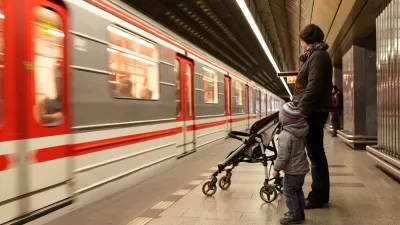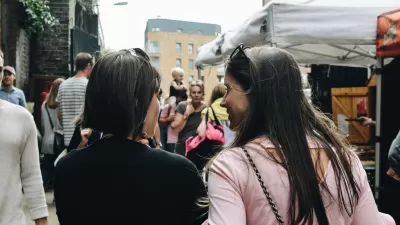Urban spaces and transportation system are largely designed and managed by men, but cities are starting to recognize the unique challenges women and children face.

In a piece in Forbes, Eva Epker argues that “cities that were designed for men’s needs and conveniences. They were not designed for women or even designed by women.”
In general, according to UN Women, almost 9 out of 10 women in cities around the world feel unsafe in public spaces – and, as Dolores Hayden argued in 1980, cities have been built, literally and figuratively, on the idea that men move into town and women stay home.
Pointing to the low number of women in the architecture and planning fields and local governments, Epker writes that “Due to this male dominance and subsequent male bias, women’s needs aren’t represented equally in either in city plans or realities: regardless of whether those women stay at home or work elsewhere.”
Epker uses examples from transportation — women are more likely to walk and have variable schedules to account for household tasks and childcare, among other things — to show how public transit and transportation infrastructure are often not geared to women’s and children’s needs.
Making cities safer and more accessible for women and children doesn’t always require massive change. In Stockholm, Sweden, where women were more likely to be injured on icy sidewalks, the city began prioritizing plowing sidewalks and cycle tracks to make conditions safer for pedestrians — “decreasing the number of accidents by 50% in the process without any extra charge to the municipality.”
FULL STORY: Cities Are Designed For Men’s Convenience - Not For Women’s Health

Alabama: Trump Terminates Settlements for Black Communities Harmed By Raw Sewage
Trump deemed the landmark civil rights agreement “illegal DEI and environmental justice policy.”

Planetizen Federal Action Tracker
A weekly monitor of how Trump’s orders and actions are impacting planners and planning in America.

How Atlanta Built 7,000 Housing Units in 3 Years
The city’s comprehensive, neighborhood-focused housing strategy focuses on identifying properties and land that can be repurposed for housing and encouraging development in underserved neighborhoods.

In Both Crashes and Crime, Public Transportation is Far Safer than Driving
Contrary to popular assumptions, public transportation has far lower crash and crime rates than automobile travel. For safer communities, improve and encourage transit travel.

Report: Zoning Reforms Should Complement Nashville’s Ambitious Transit Plan
Without reform, restrictive zoning codes will limit the impact of the city’s planned transit expansion and could exclude some of the residents who depend on transit the most.

Judge Orders Release of Frozen IRA, IIJA Funding
The decision is a victory for environmental groups who charged that freezing funds for critical infrastructure and disaster response programs caused “real and irreparable harm” to communities.
Urban Design for Planners 1: Software Tools
This six-course series explores essential urban design concepts using open source software and equips planners with the tools they need to participate fully in the urban design process.
Planning for Universal Design
Learn the tools for implementing Universal Design in planning regulations.
Caltrans
Smith Gee Studio
Institute for Housing and Urban Development Studies (IHS)
City of Grandview
Harvard GSD Executive Education
Toledo-Lucas County Plan Commissions
Salt Lake City
NYU Wagner Graduate School of Public Service





























